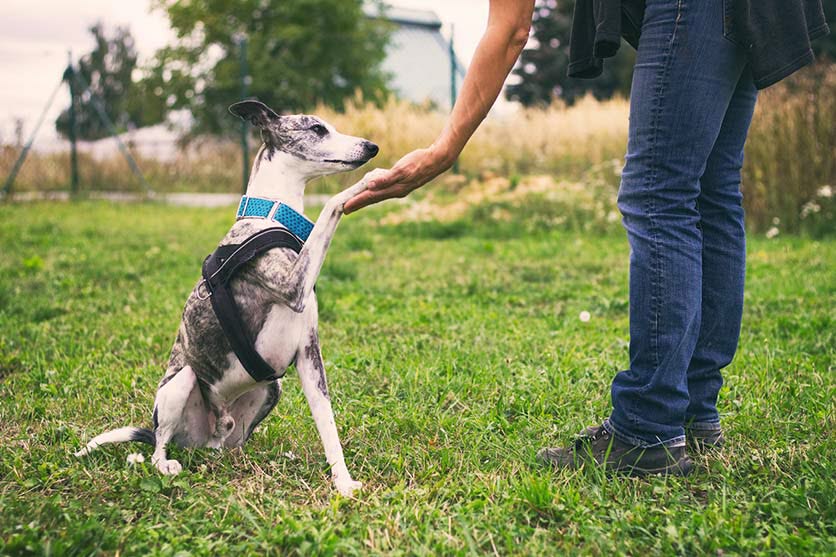
Why adopt a greyhound?
Recent investigations into the greyhound racing industry have exposed damming evidence to which many have responded by adopting and rescuing greyhounds all over Australia. Greyhound adoption has increased dramatically.
Below are some tips specific to easing the transition for newly retired greyhounds moving into a new home.
Is greyhound adoption appropriate for you?
Though surprising to some, greyhounds may make wonderful family pets. They have a naturally gentle and loving disposition and contrary to their reputation as athletes, they do not require as much exercise as you may think. It is worth being aware of the history of a given greyhound when considering adoption.
If they have been a part of the racing industry they have likely been treated in a variety of ways, which may easily elicit behavioural problems and anxiety. Ongoing communication with the rescue organisation and your local veterinarian is vital to ensure a mutually compatible fit for both dog and new owners.
A greyhound may require a space of her own and additional time to settle into a new home. Any dog being transitioned into a new home will undergo given stressors but minimising these stressors is vital. The ability to retreat into her own space will be important to your newly adopted greyhound.
She would have had her own individual kennel or crate where she would have stayed between race training. Ensure she has a safe quiet warm space with her own bed/blanket to retreat to at all times, free from noise, other pets and children. She may have been kept outside prior to coming to your home so toilet training may be required for her.
The laws for greyhounds
Australian laws across all states, except the ACT and NT, stipulate that all greyhounds that have come through a greyhound adoption programme must wear a muzzle in public. Green collars may be acquired for those greyhounds who undergo a temperament test through an approved retraining program, which deems them fit for entering public areas without a muzzle.
Thin-skinned
Greyhounds are physically very lean thus vulnerable to both the cold and heat. A coat is likely necessary for cooler temperatures for your new greyhound. They have minimal fat, no undercoat and a very thin layer of fur, hence a protective coat is favoured during adverse weather events such as cold, wind or rain.
Despite being bred and exploited for their speed and agility, greyhounds are actually low energy dogs, particularly docile by nature, and revel in relaxation and comfort. Greyhounds are particularly gentle and affectionate and will generally want to be with you. They are very sociable and highly responsive to training. Their calm quiet temperament together with their relaxed often sedentary demeanour makes them well suited to life indoors.
How to deal with an adopted greyhound’s behaviour
Fear and anxiety are typically seen in greyhounds due to their genetics and lack of early socialisation to normal domestic life. This may mean with people also. They do very well as adopted pets despite this, but learning social propriety whilst navigating an entirely new environment so late in life is challenging for them.
This requires a lot of patience and consistency from owners. Always rewarding good behaviour is vital. This helps to improve upon not only their bond with you as their new owner, but builds their confidence and helps to curb uncertainty in the dog. Routine is very helpful as is consistent training, continued positive reinforcement and praise for good behaviour. If problem behaviours become worse overtime then it is important to contact your veterinarian and work on a plan to possibly engage a behaviourist for some further assistance to modify such behaviours. Signs of anxiety-induced behavioural problems include but are not limited to:
- Persistent vocalisation, particularly in your absence
- Sleep aggression
- Excessive fear
- Destructive behaviour
- Freezing whilst on a walk
- Lunging
- Growling at others
- Resource guarding
Talk to your veterinarian about adopting a greyhound from a reputable rescue organisation in your state or region.
